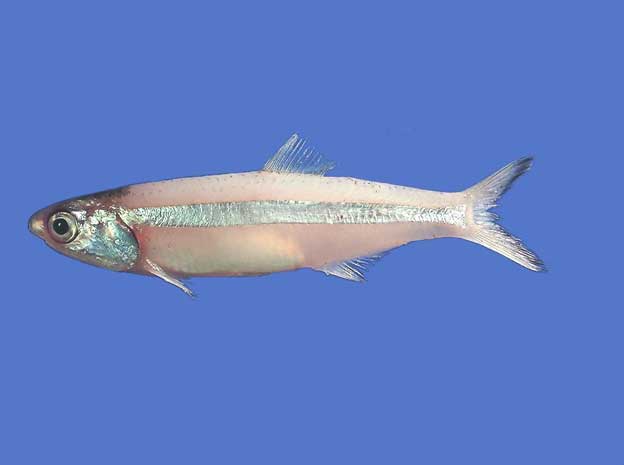
Anchoa hepsetus (SEFSC Pascagoula Laboratory; Collection of Brandi Noble, NOAA/NMFS/SEFSC )
Superregnum: Eukaryota
Cladus: Unikonta
Cladus: Opisthokonta
Cladus: Holozoa
Regnum: Animalia
Subregnum: Eumetazoa
Cladus: Bilateria
Cladus: Nephrozoa
Superphylum: Deuterostomia
Phylum: Chordata
Subphylum: Vertebrata
Infraphylum: Gnathostomata
Megaclassis: Osteichthyes
Superclassis/Classis: Actinopterygii
Classis/Subclassis: Actinopteri
Subclassis/Infraclassis: Neopterygii
Infraclassis: Teleostei
Megacohors: Osteoglossocephalai
Supercohors: Clupeocephala
Cohors: Otomorpha
Subcohors: Clupei
Superordo: Clupeomorpha
Ordo: Clupeiformes
Subordo: Clupeoidei
Familia: Engraulidae
Genus: Anchoa
Species: Anchoa hepsetus
Name
Anchoa hepsetus (Linnaeus, 1758)
Original combination: Esox hepsetus
References
Linnaeus, C. 1758. Systema Naturae per regna tria naturæ, secundum classes, ordines, genera, species, cum characteribus, differentiis, synonymis, locis, Tomus I. Editio decima, reformata. Holmiæ: impensis direct. Laurentii Salvii. i–ii, 1–824 pp DOI: 10.5962/bhl.title.542: 314. Reference page.
Anchoa hepsetus in the World Register of Marine Species
Vernacular names
svenska: Bredrandig ansjovis
中文: 寬帶小鯷
Anchoa hepsetus, commonly known as the broad-striped anchovy, is a species of ray-finned fish in the family Engraulidae. It grows to be about 15 cm (6 in) long. The broad-striped anchovy is found in the west Atlantic along the North American coast from Nova Scotia and the Maine coast scarcely, and abundantly from the Chesapeake bay to the West Indies and Uruguay. It is found most commonly in shoals along coastal waters, as deep as 73 m (40 fathoms) although mostly found water more shallow than this. The broad-striped anchovy spawns in spring. Their eggs are pelagic and hatch within 48 hours at regular spring temperatures. At young ages, it eats copepods, but as the fish ages, its diet begins to consist of other small crustaceans, molluscs, and worm larvae. It is an important food staple for large commercial fishes, such as the American seatrout. It is commonly eaten by birds. It is elongate with large eyes and protuberant snout, large mouth and underslung jaw. Its anal fin is quite short and its front fin lies beneath the end of the dorsal fin. It is grey-green with black dots, but its notable feature is its silvery stripe from head to tail.
References
Munroe, T.; Aiken, K.A.; Brown, J.; Grijalba Bendeck, L. (2015). "Anchoa hepsetus". IUCN Red List of Threatened Species. 2015: e.T16406327A16510237. doi:10.2305/IUCN.UK.2015-4.RLTS.T16406327A16510237.en. Retrieved 19 November 2021.
J. S. Valencia and R. Regis, Reproductive characteristics of Anchoa hepsetus, Proc. Gulf Caribb. Fish. Inst.
Retrieved from "http://en.wikipedia.org/"
All text is available under the terms of the GNU Free Documentation License

